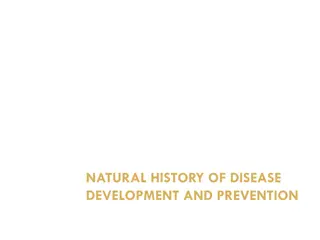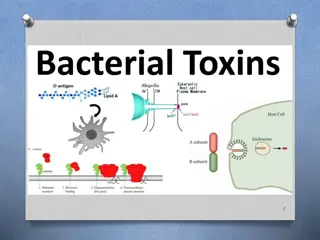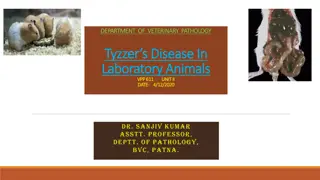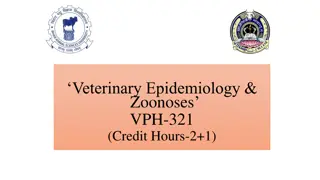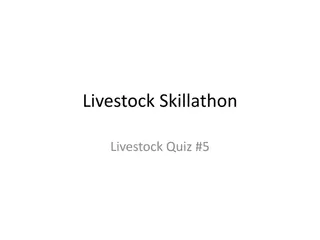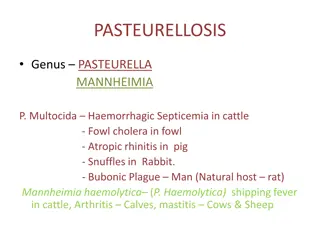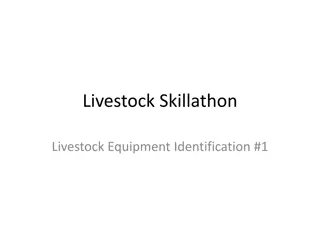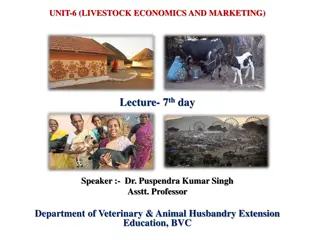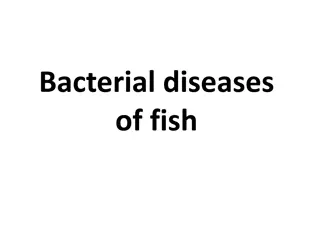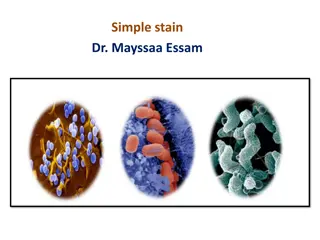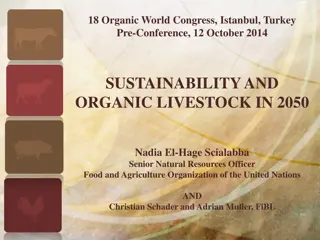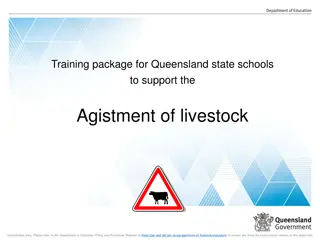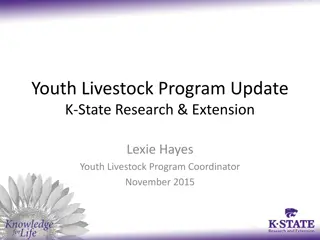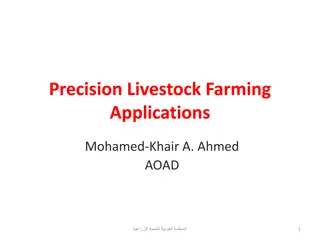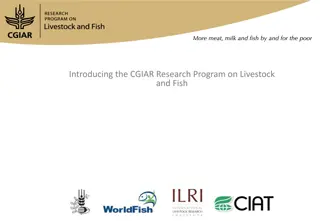Understanding Pasteurellosis: A Bacterial Disease in Livestock
Pasteurellosis, caused by organisms like Pasteurella and Mannheimia, affects various animals including cattle, fowl, pigs, and rabbits. The disease presents as haemorrhagic septicaemia in cattle, with symptoms like high fever and respiratory distress. It is an important bacterial disease in livestock, transmitted through contaminated feed or droplets. Pathogenesis involves organism proliferation in the body, leading to characteristic symptoms.
Download Presentation

Please find below an Image/Link to download the presentation.
The content on the website is provided AS IS for your information and personal use only. It may not be sold, licensed, or shared on other websites without obtaining consent from the author. Download presentation by click this link. If you encounter any issues during the download, it is possible that the publisher has removed the file from their server.
E N D
Presentation Transcript
PASTEURELLOSIS Genus PASTEURELLA MANNHEIMIA P. Multocida Haemorrhagic Septicemia in cattle - Fowl cholera in fowl - Atropic rhinitis in pig - Snuffles in Rabbit. - Bubonic Plague Man (Natural host rat) Mannheimia haemolytica (P. Haemolytica) shipping fever in cattle, Arthritis Calves, mastitis Cows & Sheep
H.S Colonies are small, non- hemolytic, translucent, mucoid type. They don t grow in Mckonkcy s agar. Manniheimia Haemolytica can grow in Mckonkcy s agar
H.S Bio-chemical tests are done. They are oxidase + Ve , indole +Ve, catalase Ve. Nitrates will be reduced to nitrites, acid produces without gas, citrate Ve
H.S They have both capsular (5) and somatic antigens (16). Capsular antigens A, B, D, E, F: - H A test Somatic Ag I,--------XVI - AGPT. B : 2 is responsible for HS in India and S-E Asia. E : 2 is found only Africa. Fowl cholera A: 1, A : 3,4, F : 4, D : 3. A: 1 - more prevalent
HAEMORRHAGIC SEPTICAEMIA Acute septacaemic disease with high fever, respiratory distress, diarrhea. In less acute case, oedema occurs at the brisket region. Absent in buffalo, they usually occurs with in 2-4 days.
H.S Synonym: Stockyards disease , Pasteurellosis, Gala ghout.
Incidence It is one of the important bacterial diseases of cattle and rarely buffaloes in India Sheep and goat Rarely affected Swine and Fowls May be affected
H.S Transmission Ingestion of contaminated feed, water etc. The organism is found in the saliva of affected animals Droplet infection may occur
H.S Pathogenesis Organisms on entry into the system reaches blood, proliferate and spread throughout the body due to its septicaemic nature and produces petechial haemorrhjages on serous menbranes in different organs. Hence it is called as - HAEMORRHAGIC SEPTICAEMIA and ecchymotic and mucous
Pathogenesis The bacteria ( Bipolar) has capsule which prevent its opsonization and Phagocytosis. The bacteria comes in lymph through pharyngeal tonsils and cause Bactermia. The bacteria multiplies and produces septicemia and produce toxins.
The toxins are A) Leukotoxin it help in stabilizing bacteria & prevent its Phagocytosis by destroying monocyte, macrophages B) Endotoxin destroy endothelium of blood vessels and cause intravascular permeability, oedema & hemorrhage. C) The toxin also activate macrophage to release Cytokines.
H.S Clinical signs High temperature, dullness, dyspnoea, hot painful swelling head, dewlap and neck with Inflammatory exudate in the subcutaneous tissues.
H.S Gross lesions Petechiae membranes myocardium, Gastrointestinal tract. Lymph glands- Swollen and haemorrhagic G.I tract is severely inflammed with contents mixed with blood on all serous and mucous especially pleura, on epicardium, peritoneum and
H.S Microscopic lesions In acute and subacute cases, the predominant lesion is fibrinous bronchopneumonia The organism is small ovoid rods the ends of rods are more deeply stained than central portion which gives appearance. In rabbits Haemorrhagic tracheitis. them a bipolar
H.S Diagnosis Examination of blood smear A heart blood swab may be rubbed over the scarified abdomen of a rabbit. It will die within 24 to 40 hours showing haemorrhgaes, especially haemorrhagic pathognomonic lesion tracheitis is
JOHNE'S DISEASE Synonym : Paratuberculosis Chronic wasting illness of ruminants with prolonged course, dehydration, emaciation and recurrent diarrhoea,
Aetiology Mycobaterium paratuberculosis - Three strains: Bovine strain Ovine strain Scottish strain
Incidence The disease is of worldwide distribution and constitutes an important economic problem in cattle Susceptibility Ruminants are usually affected. Horses and pigs may be affected very rarely 2-3 year-old female in high milk production most susceptible. Cow sub-clinical, organism abundantly in the milk new born animals highly susceptible. Gut is the main target organ It is less frequently encountered sheep and goats
Transmission Infection is ingestion. Faeces containing the organisms serve as the primary source of infection Incubation period : Long and protracted even upto 2 years
Organisms enters the body through intestinal mucosa, sets up bacteremia and settles in the mucosa of intestine, mesenteric lymph nodes and tonsil produce a inflammation chronic granulomatous Cell mediated immune response and followed by humoral immune response initiated by the release of bacteria by dying macrophages as the disease progresses.
Immediate hypersensitivity Mediates diarrhea. Delayed hypersensitivity mediates emaciation & anemia. Failure of protein synthesis mediates muscle atrophy. Cytotoxic muscle atrophy & renal damage.
Clinical signs Emaciation, hide and bound with dry coat Normal appetite with increased thirst and diarrrhoea Sheep and goat Diarrhoea is not common, emaciation observed
Gross lesions Carcass Emaciation with gelatinous fat Terminal part of ileum Wall thickened and oedematous The mucosa is folded and showed Transverse corrugation or rugae (like cerebral convolution)
Microscopically granulomatous lymphocytic infiltration, typical Langerhans type gaint cells & scattered granulomatas. enteritis pronounced chronic heavy with



